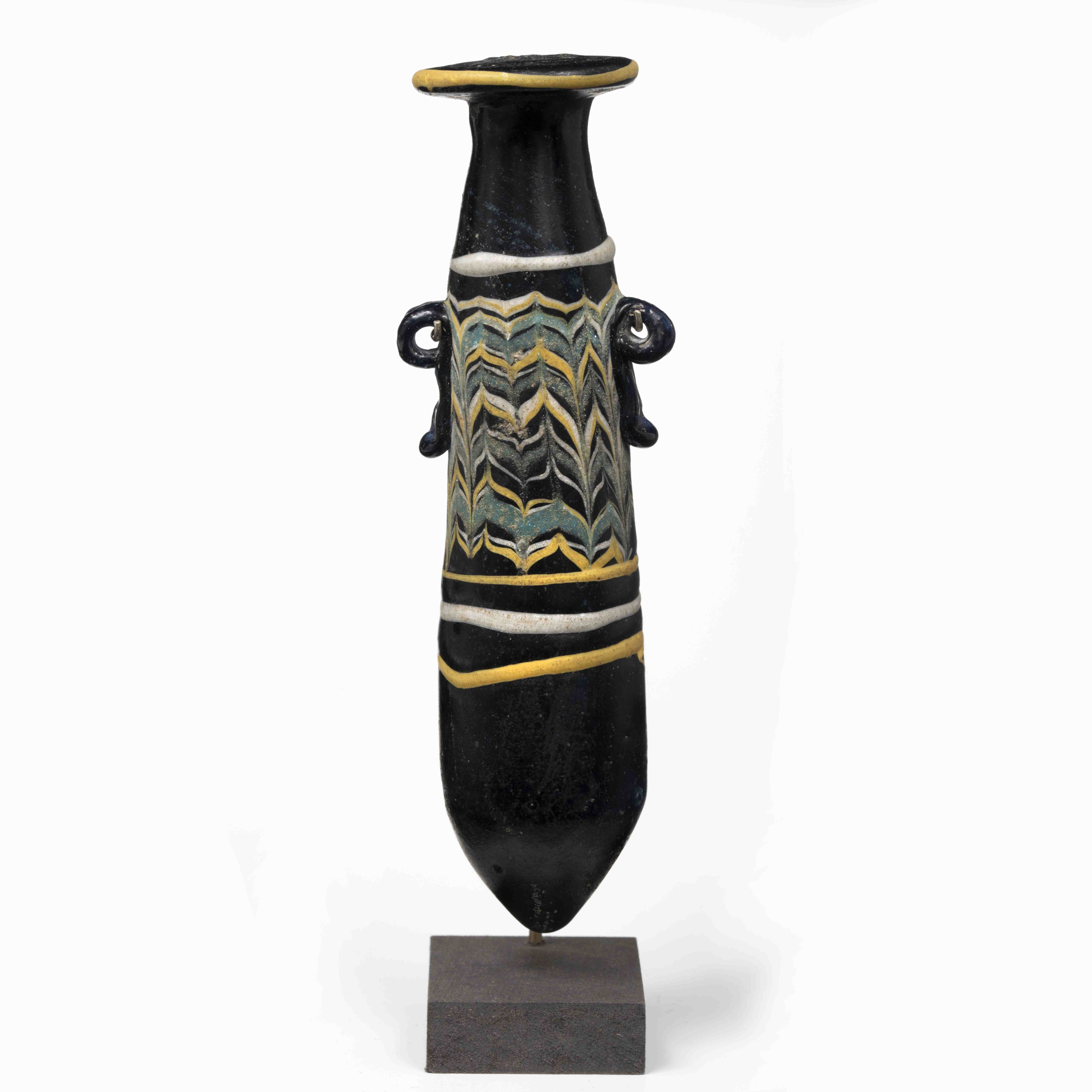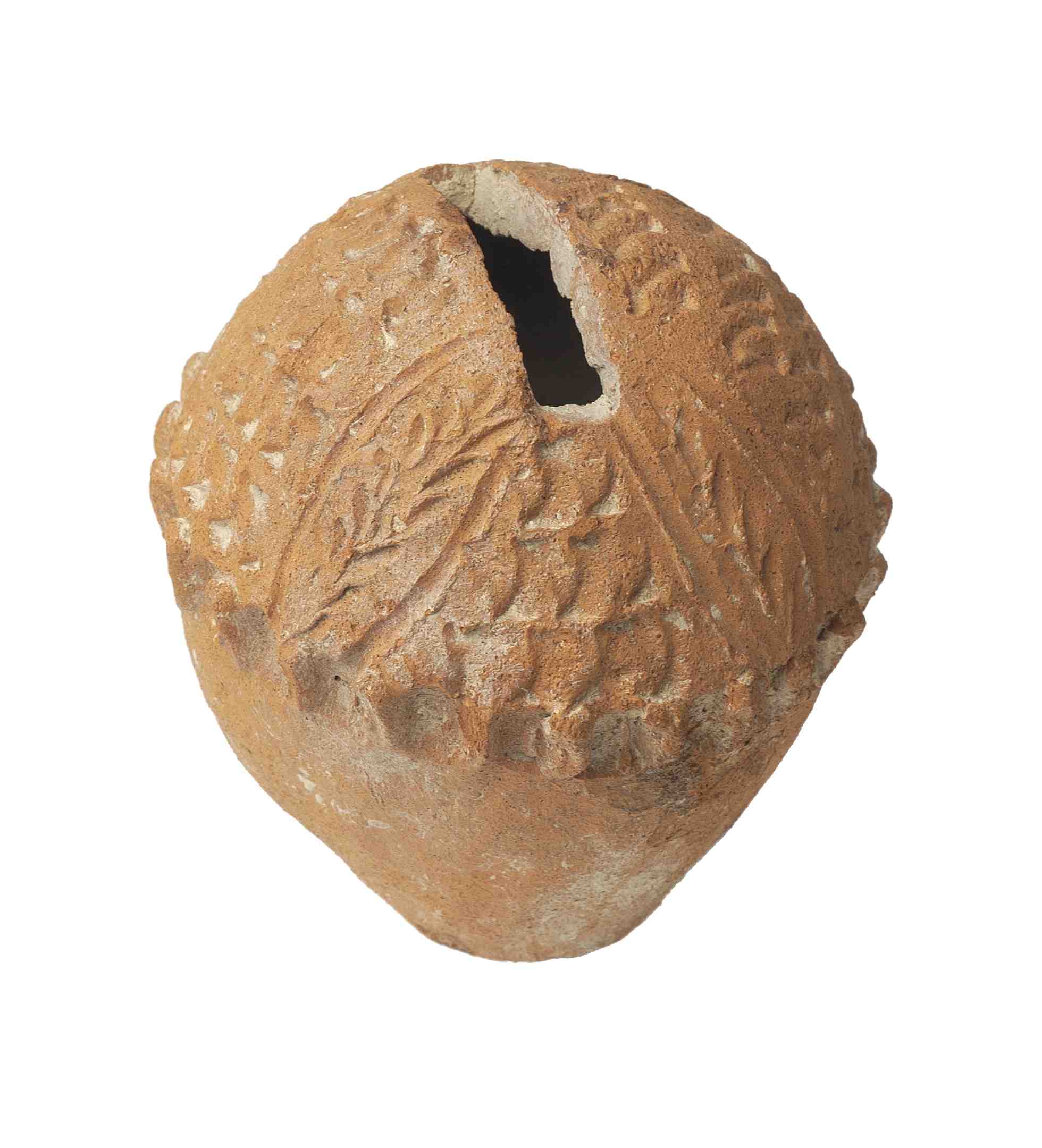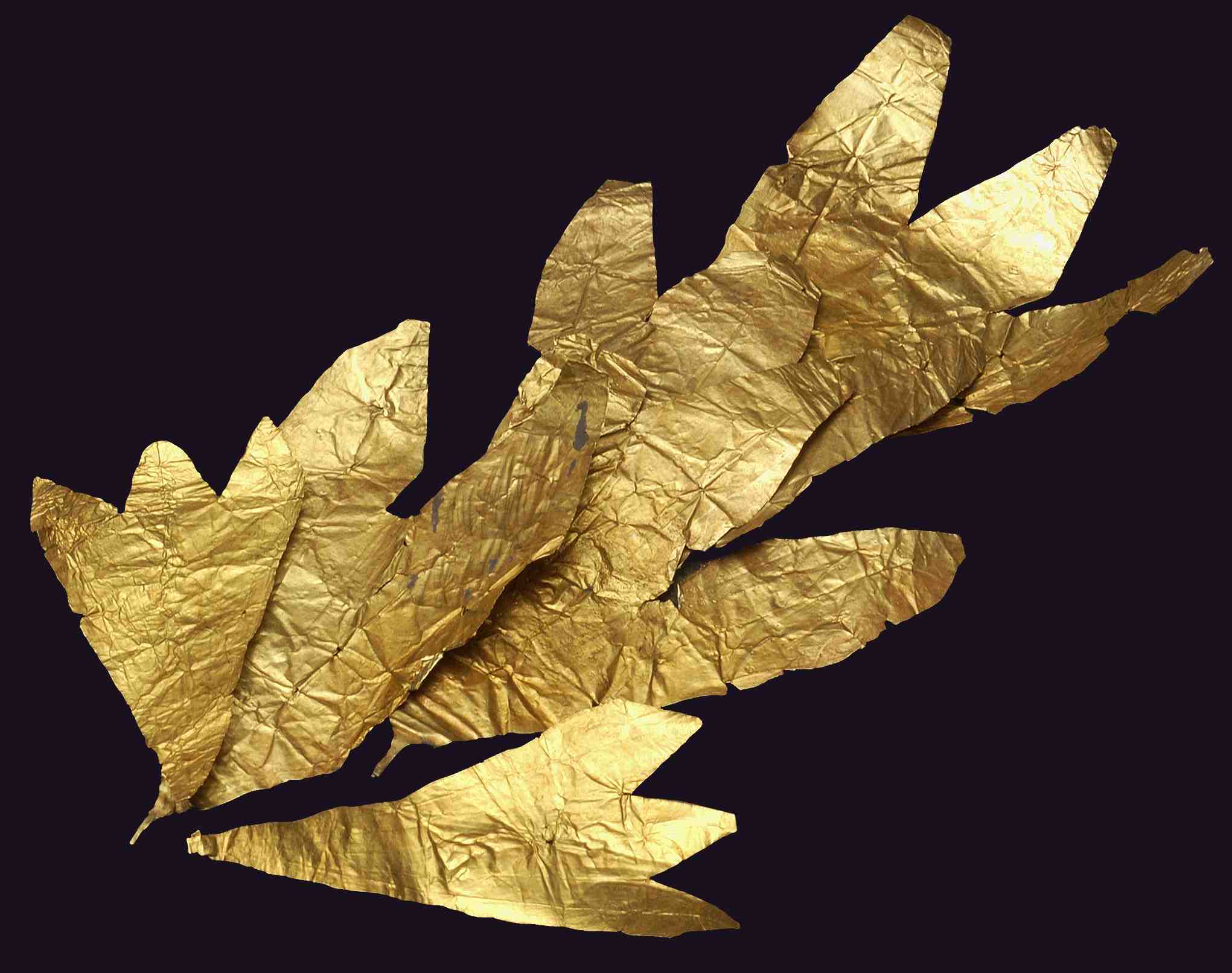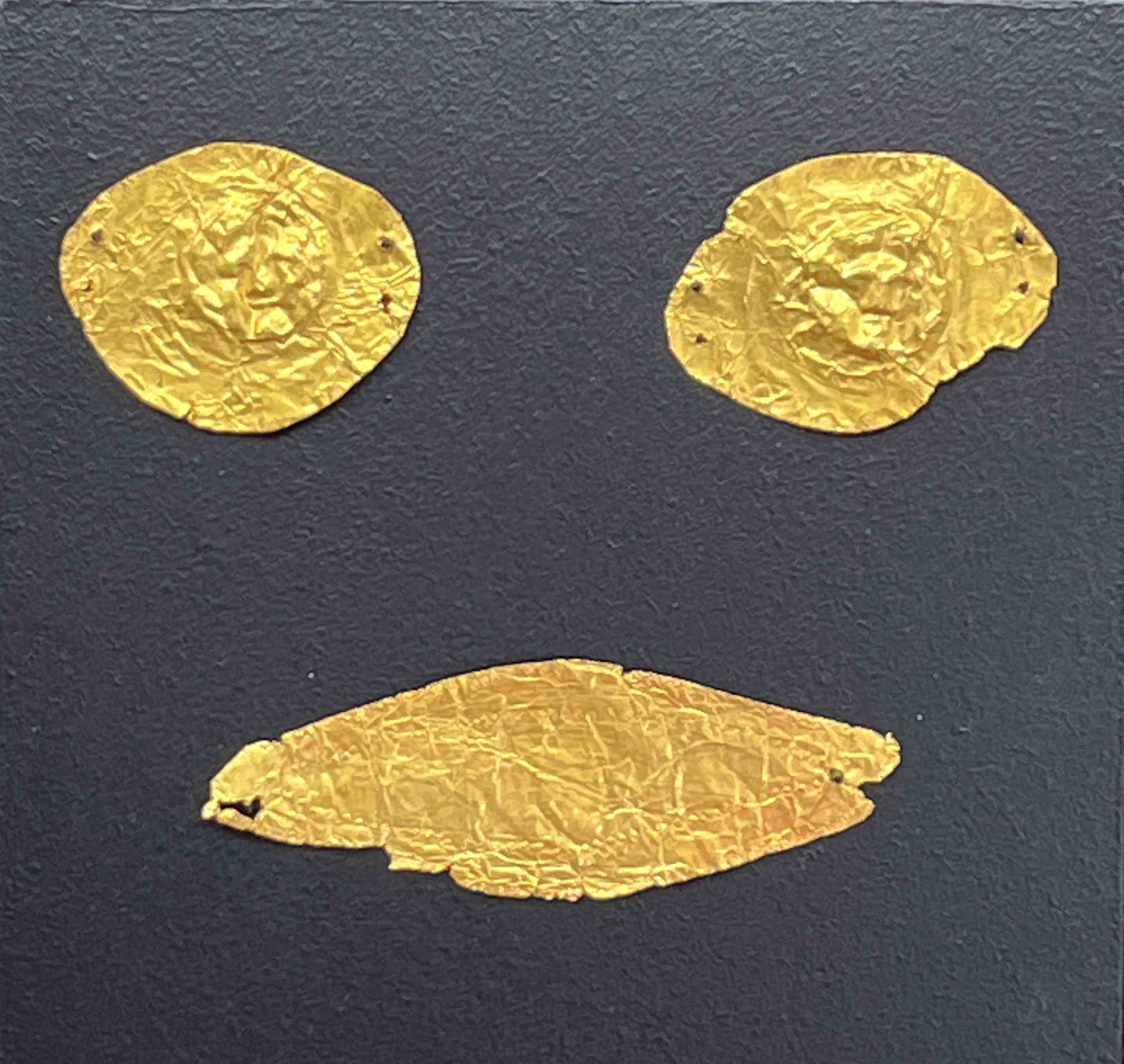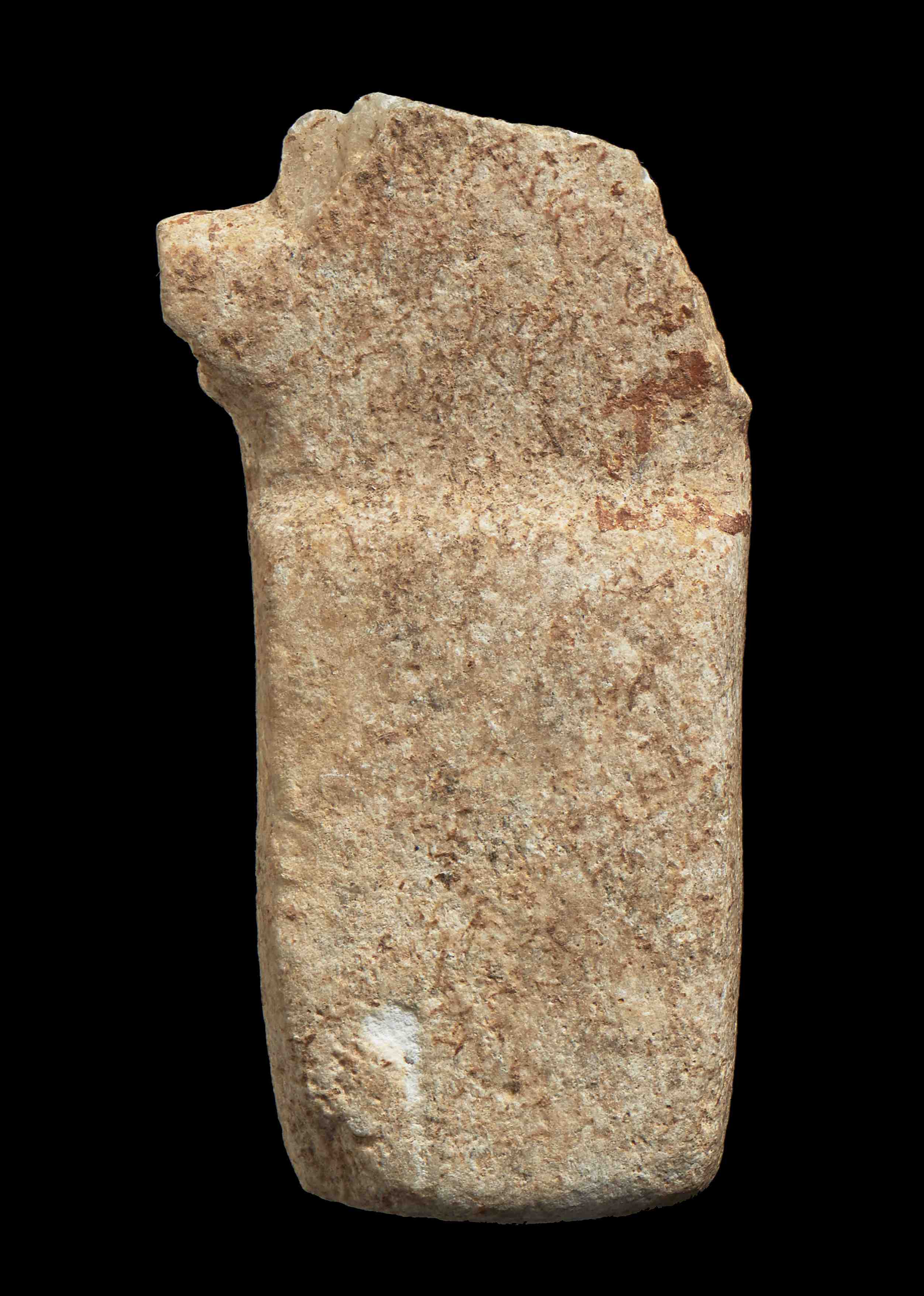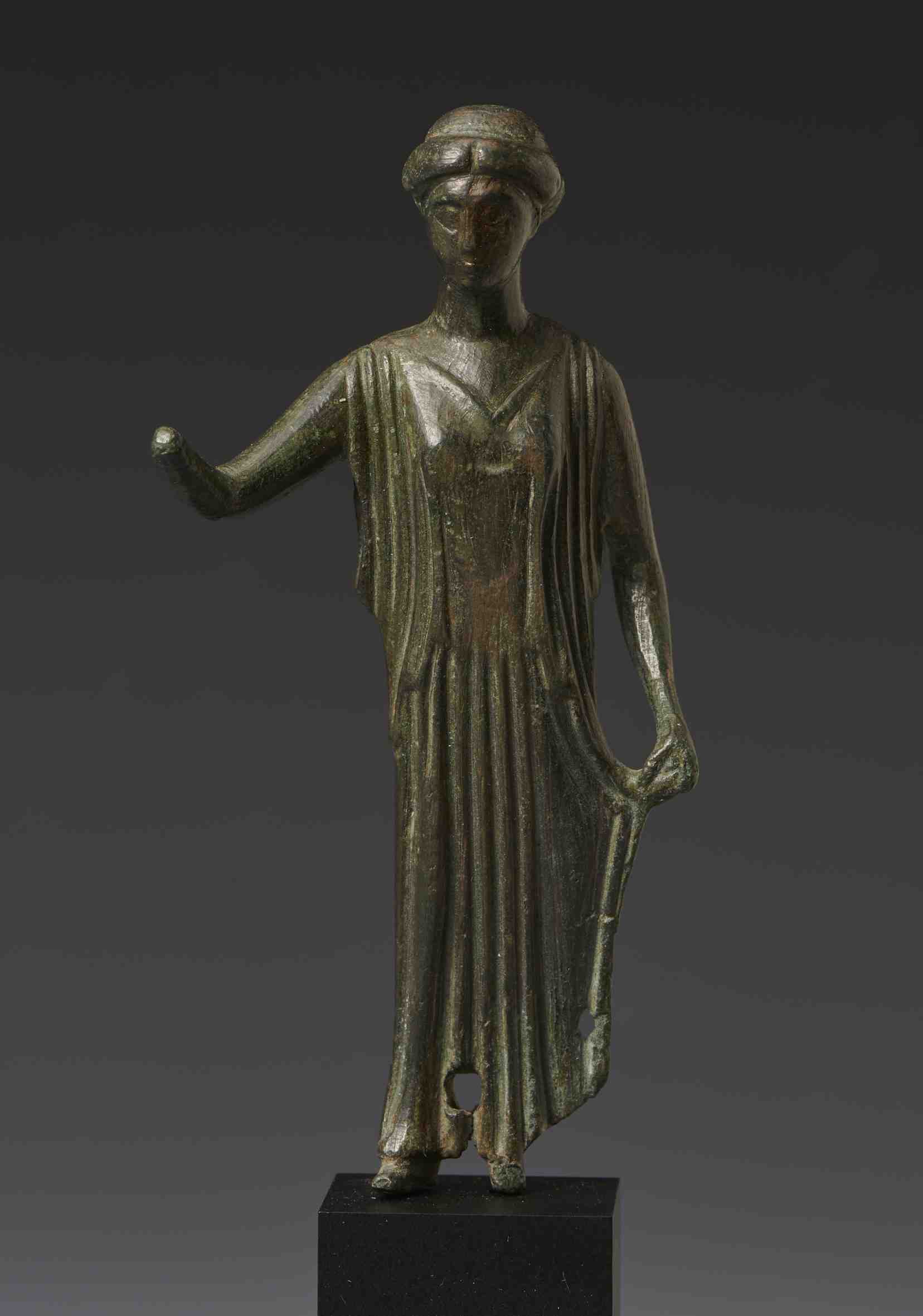Terracotta savings box
Unusual biconical children's money box with flat base, the belly top with rectangular groove is adorned with a wheat stalk at the angles, in between them dented zig-zag decoration
Note
Most of these money-boxes have been found in the western half of the Roman World, in Italy, France, Germany, England, and the Netherlands. Four main Roman types are known. Some bear the inscription 'annum novum fastum, felicem' (a happy an prosperous New Year) which indicates that they were given as New Year's presents. The practice of children having received such a savings-banks as New Year's presents were going about the streets and soliciting contributions survived until modern times.
Private collection, Switzerland, acquired in the late 1970s
Hans Graeven, die thönerne Sparbüchse im Altertum, in: Jahrbuch Des Kaiserlich Deutschen Archäologischen Instituts, 16, 1901, 160-189
David M. Robinson, Some Roman terra-cotta saving-banks, in: AJA 1924, vol. 28, no. 3, 239-250
Musée d'art et d'histoire, Geneva, 2002 until 2021

